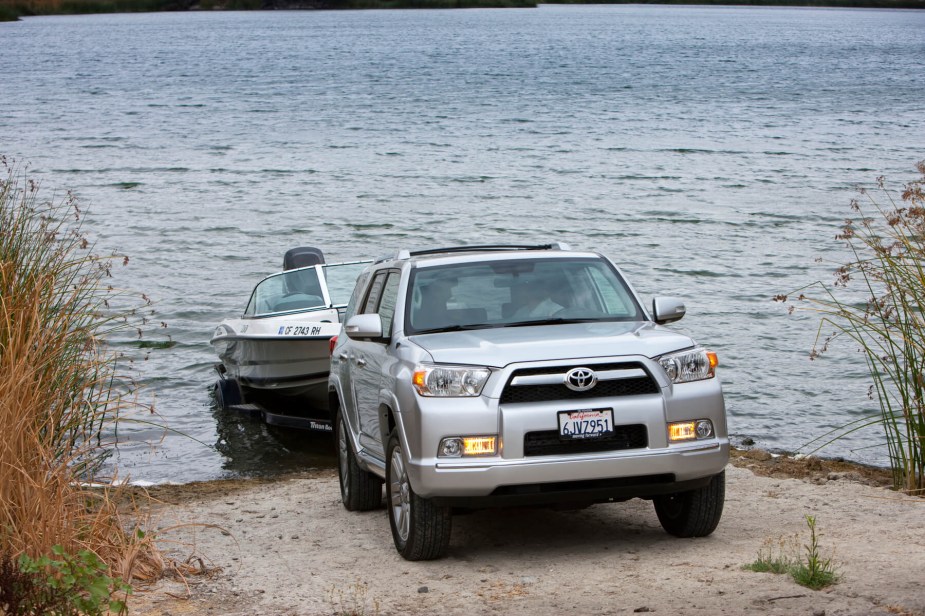
How Reliable is a 4Runner After Ten Years?
Few vehicles can claim a reputation for reliability as strong as the Toyota 4Runner. But with that reputation for durability comes a challenge for those interested in the SUV: high resale value. Check the used market, and you’ll find 4Runners with prices that aren’t far from the original MSRP. For some prospective buyers, that means looking at older models. But can you get the same level of reliability from a 10-year-old 4Runner as a new 4Runner? Here’s a look at the service and maintenance costs of a 2013 Toyota 4Runner to find out.
Common Problems with the 2013 4Runner

Even the most reliable SUVs have their blemishes. The 4Runner is no different. There are a couple of items to watch out for in the service records of a 2013 4Runner.
According to Repair Pal, the most common reliability issues for older 4Runners revolve around the SUV’s brakes. For one, owners report accelerated front brake wear that can lead to vibrations during use. Specifically, the SUV can go through brake rotors quickly. If you’re shopping for an older 4Runner, check its service records for brake repairs.
Repair Pal does not report common reliability problems for the 4Runner’s powertrain or drivetrain. While not all models are the same, and issues can certainly occur, there doesn’t appear to be a significant trend of engine or transmission failures. But it’s still wise to check service records for on-time oil changes and other routine maintenance.
Safety Recalls

Safety recalls are standard for almost every SUV on the road. After all, it’s hard for manufacturers to catch every potential issue during manufacturing.
A common recall for older 4Runners involves the SUV’s airbag system. Faulty airbags can produce dangerous shrapnel upon deployment and injure passengers. Fortunately, local Toyota maintenance centers can address the fix at no cost to owners.
If you’re curious about a 4Runner’s recall history, search its VIN on the National Highway Safety Administration website.
Annual Repair Costs
Annual repairs often contribute significantly to a vehicle’s cost of ownership. From routine maintenance to unexpected repairs, these costs matter.
According to Repair Pal, drivers can expect an average annual repair cost of around $559 for a ten-year-old 4Runner. This cost will vary depending on location, mileage, and other factors. But it’s a good baseline to consider while shopping for your SUV.
Why are old Toyota 4Runners reliable?

Toyota has historically built its 4Runners as simple vehicles. Without unnecessary components and technology to break, the 4Runner is typically less likely to run into problems and more likely to stay reliable.
Once Toyota finds a solid engine, it tends to stick with it longer than other brands. While that means models like the 4Runner might not get the latest technology for power or efficiency, it also means there’s more time to work out maintenance quirks and build up a cache of spare parts. So if something breaks, it’s relatively easy and affordable to fix.
Toyota has used the same engine in the 4Runner for almost 20 years. The 4.0-liter V6 may not be the most sophisticated powerplant, but you’ll be hard-pressed to find a mechanic that can’t work on it or visit a parts supplier that can’t supply the necessary components.
If you have your eye on a 4Runner from 10 years ago, you can feel confident knowing it uses many of the same parts as the new models on sale today.


